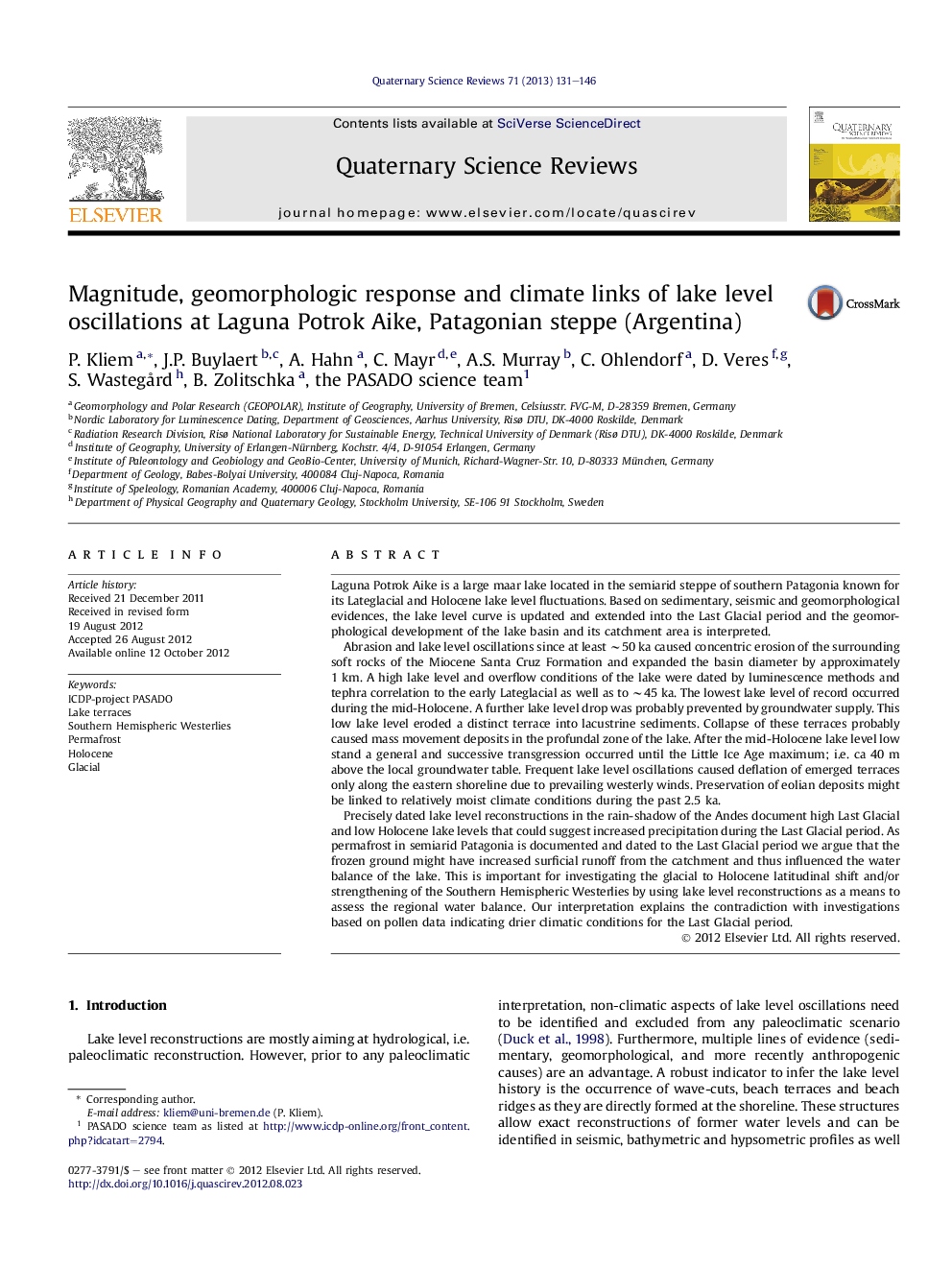| کد مقاله | کد نشریه | سال انتشار | مقاله انگلیسی | نسخه تمام متن |
|---|---|---|---|---|
| 4736874 | 1640863 | 2013 | 16 صفحه PDF | دانلود رایگان |
Laguna Potrok Aike is a large maar lake located in the semiarid steppe of southern Patagonia known for its Lateglacial and Holocene lake level fluctuations. Based on sedimentary, seismic and geomorphological evidences, the lake level curve is updated and extended into the Last Glacial period and the geomorphological development of the lake basin and its catchment area is interpreted.Abrasion and lake level oscillations since at least ∼50 ka caused concentric erosion of the surrounding soft rocks of the Miocene Santa Cruz Formation and expanded the basin diameter by approximately 1 km. A high lake level and overflow conditions of the lake were dated by luminescence methods and tephra correlation to the early Lateglacial as well as to ∼45 ka. The lowest lake level of record occurred during the mid-Holocene. A further lake level drop was probably prevented by groundwater supply. This low lake level eroded a distinct terrace into lacustrine sediments. Collapse of these terraces probably caused mass movement deposits in the profundal zone of the lake. After the mid-Holocene lake level low stand a general and successive transgression occurred until the Little Ice Age maximum; i.e. ca 40 m above the local groundwater table. Frequent lake level oscillations caused deflation of emerged terraces only along the eastern shoreline due to prevailing westerly winds. Preservation of eolian deposits might be linked to relatively moist climate conditions during the past 2.5 ka.Precisely dated lake level reconstructions in the rain-shadow of the Andes document high Last Glacial and low Holocene lake levels that could suggest increased precipitation during the Last Glacial period. As permafrost in semiarid Patagonia is documented and dated to the Last Glacial period we argue that the frozen ground might have increased surficial runoff from the catchment and thus influenced the water balance of the lake. This is important for investigating the glacial to Holocene latitudinal shift and/or strengthening of the Southern Hemispheric Westerlies by using lake level reconstructions as a means to assess the regional water balance. Our interpretation explains the contradiction with investigations based on pollen data indicating drier climatic conditions for the Last Glacial period.
Journal: Quaternary Science Reviews - Volume 71, 1 July 2013, Pages 131–146
